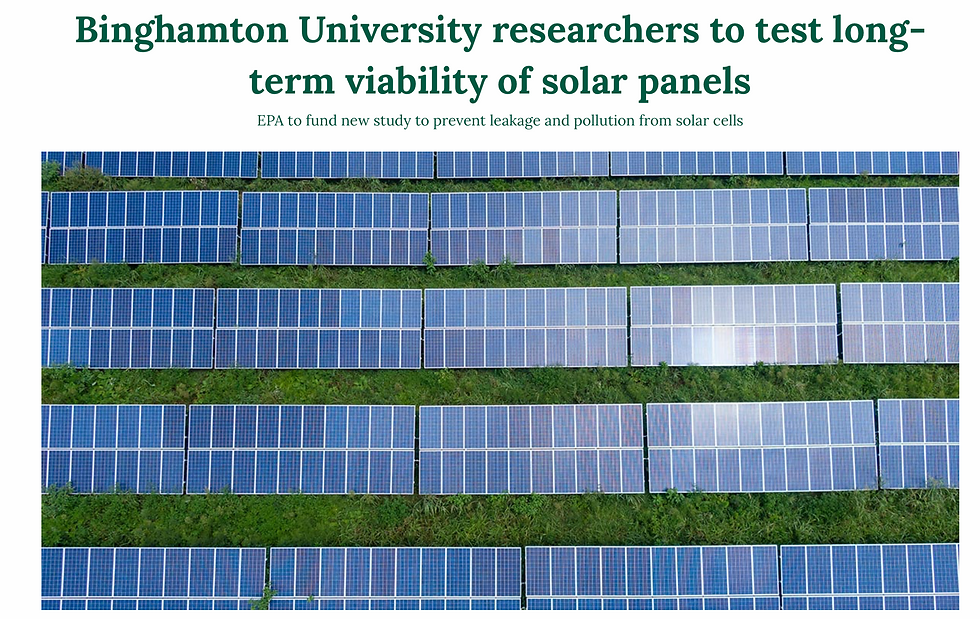Yuxin was awarded with Green Chemistry and Safer Chemicals - Second Annual NYSP2I Student and Faculty Research grant.
- Yuxin Wang
- Aug 6, 2024
- 1 min read
For more about this research: https://www.rit.edu/affiliate/nysp2i/student-green-chemistry-research

Research Title: “Low-lead perovskite solar technology for a clean, green, and sustainable energy future”
Topic areas addressed:
Chemical of concern: lead
Applies Green Chemistry Principle 4: designing safer chemicals
Applies Green Chemistry Principle 6: design for energy efficiency
The Binghamton team seeks to support the renewable energy development in New York State by developing low-lead perovskite solar cells. Using the Green Chemistry principles of designing safer chemicals and designing for energy efficiency, the team will develop low-lead perovskite solar cells which will help to significantly cut greenhouse gas emissions during manufacturing, deployment, and operation of perovskite solar technology. Perovskite solar cells have approximately 10 times less lead than traditional silicon solar technology, which uses lead in its metal contacts. The team also seeks to further reduce the lead content in perovskite solar cells by at least 50%, and to conduct environmental toxicity studies via degradation testing to assess chemical leaching, thereby reducing the toxic metal use in solar energy production.
Faculty PI co-advisors:
Yuxin Wang, Assistant Professor, Systems Science and Industrial Engineering
Tara Dhakal, Associate Professor, Electrical and Computer Engineering; Director, Center for Autonomous Solar Power
Student participants (lead listed first):
Tasneem Tawalbeh, Systems Science and Industrial Engineering (Graduate)
Wendy Reyes Ramos, Materials Science and Engineering (Graduate)



Comments